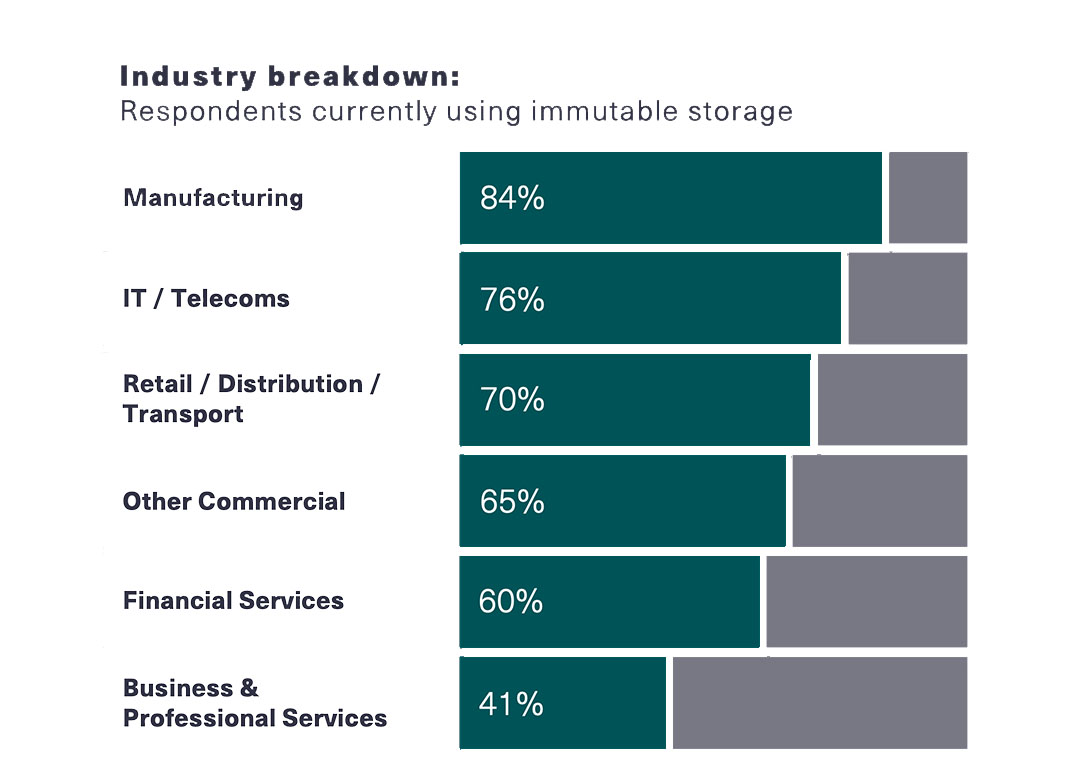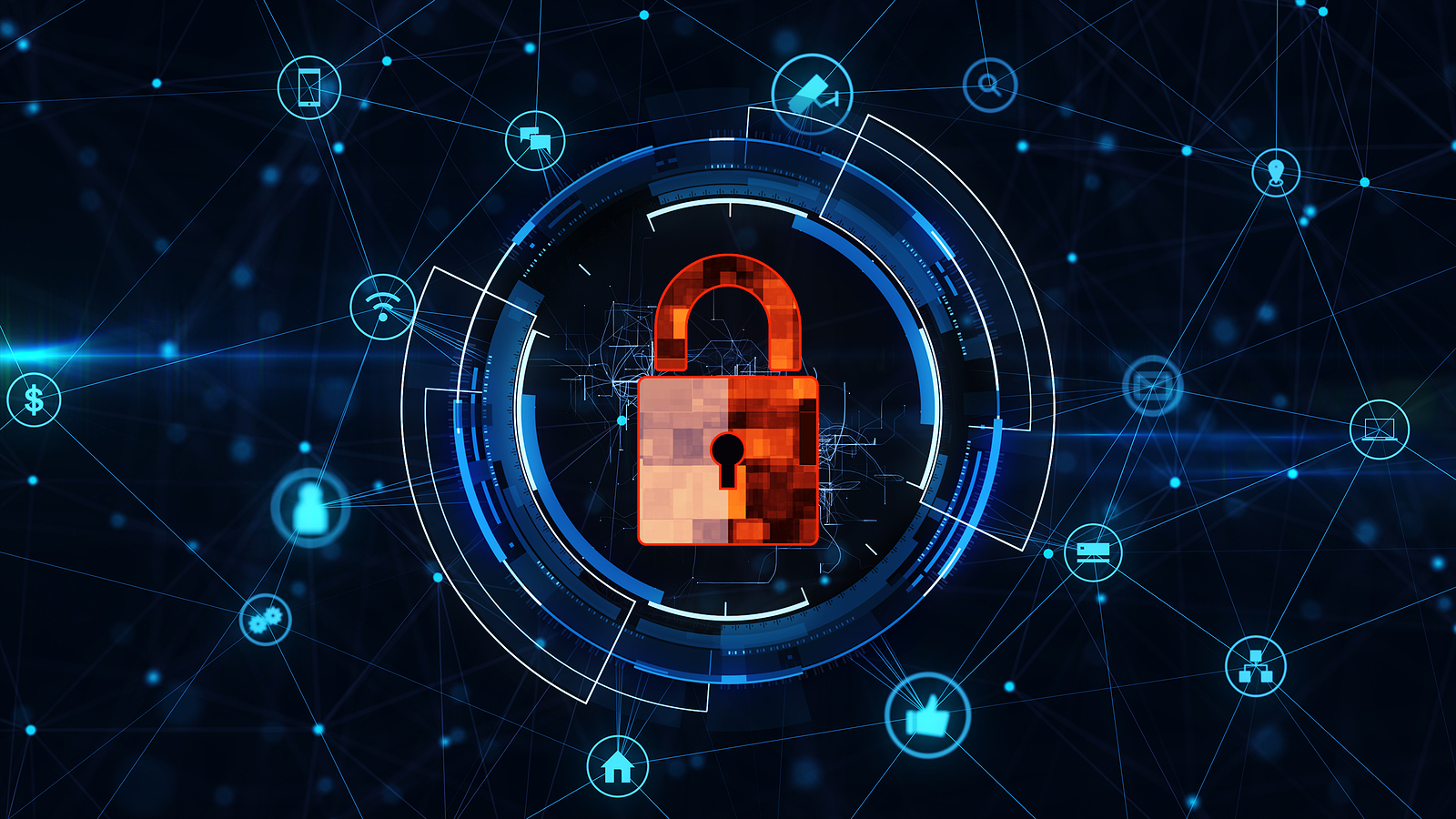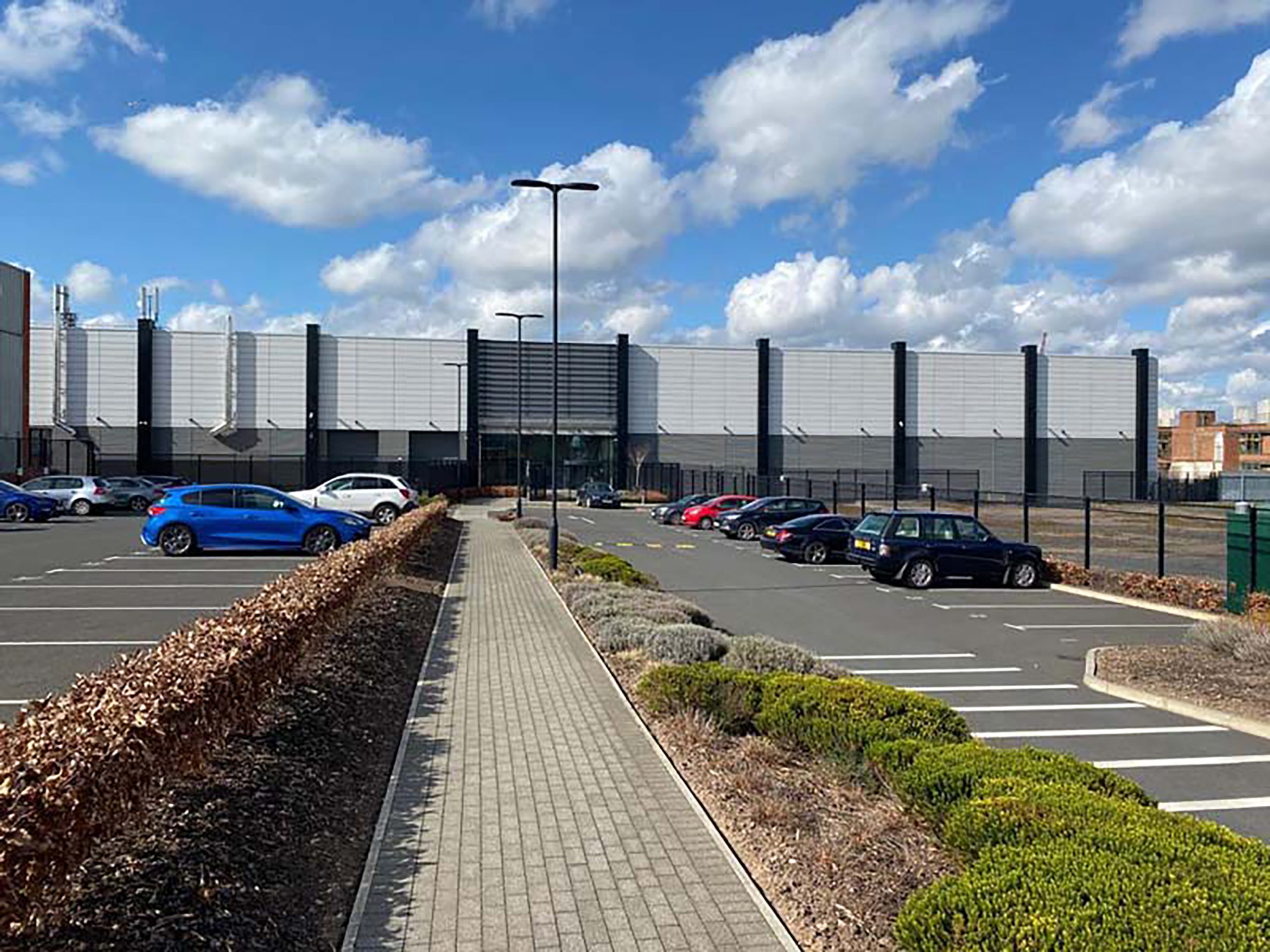Data Centre Security: Protecting Infrastructure from Physical and Cyber Threats
Data
Data Centre Security: Protecting Infrastructure from Physical and Cyber Threats
News
Pedab and Object First join forces for advanced Veeam data protection
Pedab and Object First have announced a partnership to provide Veeam customers with advanced data protection to reduce the risk of cyber threats like ransomware. This partnership brings together two companies with complementary expertise, including Pedab's strong knowledge of IT infrastructure and software solutions and Object First's innovative approach to immutable backup storage for Veeam.
Object First claims that it is known for offering the best storage for Veeam, provided as an out-of-the-box immutable backup storage appliance. It offers the last line of defense against disasters and ransomware, ensuring that data can be recovered quickly and completely, with minimal downtime.
Pedab will introduce Object First’s solution Ootbi (Out-of-the-Box Immutability) to the Northern European market. Ootbi can be deployed in 15min and supports up to 80VMs running locally, powered by Veeam Instant Recovery on a four-node configuration. The solution’s power is matched by its security. It offers object-based immutability with zero access to the root or the hardened Linux operating system by default—meaning data cannot be accessed, changed, or deleted.
Ootbi's storage environment is completely secured, validated, and third party-tested and comes preconfigured out of the box – no security expertise required. With Ootbi, businesses can safeguard their data with confidence, knowing that critical information remains secure and unchangeable, even in the face of evolving cyber threats.
“Ootbi by Object First is an important enhancement to Pedab’s portfolio of carefully selected providers. It ensures Pedab’s mission to continuously evolve our full-service solution offering to partners. With Ootbi we can now help Veeam partners provide peace of mind to their customers with an immutable onsite backup storage,” says Jesper Bartholdson, CEO of Pedab Group.
“We are excited to announce Pedab as our distributor in Northern Europe. With their extensive expertise in the IT industry, partnering with Pedab was an easy choice,” says Mark Haddleton, EMEA Channel Sales Director at Object First. “Together, we are committed to delivering secure, simple, and powerful backup storage for Veeam users, helping businesses stay one step ahead of ransomware threats.”
Isha Jain - 21 March 2024
Data
Data Centre Security: Protecting Infrastructure from Physical and Cyber Threats
News
Keepit provides fast targeted restore time after ransomware attack
Keepit, a global provider of cloud backup and recovery solutions, has announced the results available to organisations leveraging Keepit SaaS data protection. The results show Keepit solution provides organisations the ability to restore and recover backed-up data after a ransomware attack in a quick, efficient and accurate manner.
These findings stem from a recent study conducted by Forrester Consulting, which quantify the value of the world’s sole vendor-independent cloud dedicated to SaaS data protection. Keepit commissioned Forrester Consulting to conduct a Total Economic Impact (TEI) study and examine the potential return on investment (ROI) that enterprises may realise by deploying Keepit SaaS data protection.
The purpose of this study was to provide a framework to evaluate the potential financial impact of Keepit SaaS data protection on end users. To better understand the benefits, costs, and risks associated with this investment, Forrester interviewed four representatives with experience using Keepit. For the purposes of this study, it aggregated the interviewees’ experiences and combined the results into a single composite organisation that is represented as a manufacturing organisation with $2bn in annual revenue.
While ransomware attacks have become increasingly common and organisations face the risk of losing critical data, Keepit claims to offer strong protection, providing a crucial lifeline for recovering user data after cyber attacks or other events. With Keepit, information technology (IT) administrators can quickly find, restore, and save data. Additionally, the study also shows that its solution helps prevent the negative effects of ransomware attacks and saves time and money for IT teams, resulting in smoother, more time-efficient SaaS backup operations.
Benefit worth $819,100
According to the study, the Keepit solution limits the impact of a ransomware attack for the composite organisation by allowing it to recover and restore data quickly, preventing data loss and reducing downtime. This benefit is worth $819,100.
And, the study finds, “the time needed to restore the tier-one users is 90% lower than the time the composite would spend restoring its data without Keepit, which has been identified by interviewees to be at least three weeks.”
“We can prove it’s possible to significantly lower downtime during recovery from a ransomware attack. Lowering downtime is a sure-fire way to maximise return on your investment in a backup solution. Because it’s not a question of if an attack will happen, the question is how to bounce back when it does,” says Paul Robichaux, Microsoft MVP and Senior Director of Product at Keepit.
Three quarters of security decision-makers suffered a breach in the last 12 months, and in the study, Forrester research recommends, “Backups are the best insurance policy against an attack, but to be effective they need to be part of a planned and tested backup and recovery process.”
The study participants noted that their organisations planned for a disaster scenario in the event of a ransomware attack and were aware of the exposure risk and potential losses they could suffer as a result.
As a follow-up to the Forrester study, Keepit will be holding a webinar at 2pm EDT on 26 March, titled, ‘The ROI of Ransomware Recovery’. Hosted by Keepit’s Paul Robichaux, the webinar will feature guest speakers Brent Ellis, Forrester Senior Analyst, and Elia Gollini, Forrester Associate Consultant.
Key takeaways from the webinar will include:
Actionable insights and recommendations on how to address current gaps in disaster recovery planning
Insight into best practices for ensuring business continuity during a ransomware attack
Information about the return on investment (ROI) organisations have realised when deploying Keepit for ransomware recovery
To register for the webinar, visit the sign-up page here.
Isha Jain - 21 March 2024
Data Centre Security: Protecting Infrastructure from Physical and Cyber Threats
News
IT leaders rely on immutable storage as ransomware attacks skyrocket
Scality, a leader in reliable, secure and sustainable data storage software, has announced the results of a survey of 500 IT decision-makers across France, Germany, the UK and the US, to gain insight into the role immutable data storage plays in an organisation’s overall cyber security strategy.
Key findings reveal:
94% either already rely on immutable data storage or plan to implement it within the next 12 months, and an additional 2% plan to deploy it within the next three years.
69% consider immutable data storage essential to their corporate cyber security.
Only 12% of those who deployed immutable data storage say it is not essential to cyber security.
Results from the independent survey by Vanson Bourne demonstrate that IT leaders consider immutable storage as a must-have in the fight against cyber attacks. Ransomware threats are now understood by organisations to be inevitable. Reports show one in four organisations that pay a ransom never get their data back, and just 16% are able to recover without paying a ransom.
This reinforces the role immutable data storage plays as an essential last line of defence within a cyber security toolkit. With immutable storage, data cannot be deleted or modified once written, increasing data safety and ensuring organisations have the power to restore data with 100% accuracy in the event of a breach.
Survey insights: Vertical market and regional nuancesComparisons among IT leaders surveyed across vertical industries and specific countries reveal a number of notable differences:
Vertical market:
Manufacturing organisations (95%) are most likely to deploy immutable storage. While, 84% consider it essential to their corporate cyber security.
Financial services firms (74%) report the lowest reliance on immutable storage; 60% say it’s essential to their corporate cyber security.
Regional:
A majority of IT leaders across all regions currently use or plan to use immutable data storage: The US has the highest level of current or planned immutable data storage deployments, with 98% of respondents either having implemented it or planning to do so within the next year. This is followed by France at 96%, Germany at 94% and the UK at 85%.
While a relatively low number (12%) of IT leaders worldwide who currently use immutable data storage do not regard it as “essential” to their cyber security strategy, a larger percentage resides in the UK: 24% of UK respondents have deployed it but say it is not essential to their cyber security, compared to 11% in France, 9% in the US and 6% in Germany.
Dave Russell, VP of Enterprise Strategy at Veeam Software, says, “Widespread deployment of immutable storage reinforces an increased awareness of the critical role secure backup plays as an active defence against cyber attacks, specifically coupled with immutable backup data. Veeam believes that achieving zero trust data resilience with immutable storage implementations — that are indeed truly immutable — is a great opportunity for IT leaders to reduce the risk of growing data security threats and improve their overall cyber resilience.”
Does traditional immutable storage still leave a window of exposure?The survey reveals the criticality of immutable storage at a time of evolving industry dialogue about data cyber security best practices and technologies. But it’s important to note that not all immutability is created equal — some forms still leave a window of exposure.
Unlike forms of immutability enabled by traditional solutions - such as NAS/file system snapshots, dedupe appliances, Linux-hardened repositories or tape - true object storage solutions are inherently immutable at the core architecture level.
The system implements proper protocols and true object storage semantics to preserve data in its original form the very moment it is written, which is not the case for other immutable solutions that can introduce time delays before data is immutable. Each object, even those written nanoseconds apart, can never be overwritten, deleted, or modified. This architectural reinforcement provides a crucial last line of defence against ransomware attackers’ attempts to encrypt data and extort victims.
Paul Speciale, CMO, Scality, says, “Immutable data storage is an insurance policy against ransomware. While the survey data shows IT leaders resoundingly agree that immutability is a cornerstone of cyber security strategy, 31% still did not report it as essential. Here’s the reality: Being able to restore quickly from an immutable backup means the difference between a successful and unsuccessful ransomware attack. Without storage that’s truly immutable, you’re vulnerable to cyber criminals’ demands. The perception among some respondents that it’s not essential to cyber security is misguided and represents an opportunity to shift more IT leaders towards achieving a modern, inherently immutable object storage solution as a much-needed last line of defence to keep data locked and immune to ransomware exfiltration, modification or destruction.”
The survey was recently conducted by global technology market research firm Vanson Bourne across several industries, including manufacturing, telecom, professional services, financial services, and retail. Respondents were asked, ‘Is immutable data storage an essential element of your organisation’s corporate cybersecurity strategy?’ To qualify, each respondent carried a manager or above title in an enterprise-sized commercial organisation with over 1,000 employees and is primarily employed in the IT function.
Key findings in the UK:
85% of UK respondents currently rely on immutable storage or plan to implement it within 12 months. This is the lowest of the four regions (US, UK, France, Germany).
47% of UK respondents across all vertical markets consider immutable storage essential to their corporate cyber security strategy.
54% of UK respondents in the IT, technology and telecoms sector deploy and consider immutable storage essential to their corporate cybersecurity strategy. This is the highest score among all sectors surveyed in the UK.
Read the blog: What is true immutable storage?
Download the immutability checklist here.
Isha Jain - 15 March 2024
Data
Data Centre Security: Protecting Infrastructure from Physical and Cyber Threats
Neterra sees 100% increase in DDoS attacks blocked in 2023
Neterra has defended its clients from a record number of DDoS attacks in 2023. The company mitigated a total of 963,346 DDoS attacks and handled over 6.6PB of malicious traffic. Out of the total attacks, approximately 231,358 were of high intensity.
This marks a twofold increase compared to 2022, when the company thwarted 488,151 DDoS attacks.
Neterra employs a comprehensive approach to DDoS protection, combining cloud-based platforms, specialised hardware equipment, and other solutions. Through its specialised hardware equipment, the company halted 899,431 attacks, a significant portion of which were of high intensity and involved large volumes of malicious traffic. Neterra's cloud platform protected the company's clients from 63,915 attacks in 2023.
What Are DDoS attacks?
DDoS attacks typically manifest as a deluge of fake traffic, overwhelming the servers and websites of the targeted victim. Legitimate users are unable to access services, while hackers exploit the chaos to steal data. It can be likened to a massive crowd of fake customers blocking the entrance to a store, preventing genuine customers from entering.
What are the consequences?
DDoS attacks can result in financial losses, affecting online sales revenues, subscriptions, and advertising. They can also damage reputation by tarnishing the image and trust of clients, as well as lead to data loss — hackers may exploit the attack to steal sensitive information. This is the nature of a DDoS attack; an online tsunami that can last for days or even months, ultimately inundating any business.
DDoS attacks can result in financial losses, affecting online sales revenues, subscriptions, and advertising. They can also damage reputation by tarnishing the image and trust of clients, as well as lead to data loss, hackers may exploit the attack to steal sensitive information. This is the nature of a DDoS attack, an online tsunami that can last for days or even months, ultimately inundating any business.
Isha Jain - 8 March 2024
Data
Data Centre Security: Protecting Infrastructure from Physical and Cyber Threats
News
Acronis unveils Cyber Protect 16: A new era in cyber security
Acronis, a provider of cyber protection, has introduced the latest release of its flagship product – Acronis Cyber Protect 16. Acronis Cyber Protect delivers robust protection against cyber threats and unparalleled backup and recovery capabilities. This latest version establishes a new benchmark in easy and fast recovery after cyber attacks or data loss, especially for modern multi-site organisations.
As technology advances, the necessity for an integrated cyber security and data protection solution fit for distributed organisations has become increasingly evident. Factors including the rise of remote work and a rapidly changing threat landscape have increased attack surfaces and raised larger data access and privacy concerns. The product introduces a new centralised dashboard that further improves and simplifies management with a single pane of glass, providing visibility and simplified management for the entire environment.
Additional features of Acronis Cyber Protect 16 include:
Cyber threat protection: Using artificial intelligence (AI) and machine learning (ML), proactively secure data, applications, and systems from advanced cyber-attacks including ransomware and other forms of malware.
Rapid recovery: Reduced dependency on central IT support empowers users to initiate one-click recovery capabilities of distributed endpoints, including bare-metal recovery of physical workloads.
Reduced TCO: Broad, multi-generational OS support, enables vendor consolidation while ensuring comprehensive protection.
Simplified management: Centralised management includes local autonomy and seamless integration with existing third-party tools to provide a unified view of backup and recovery operations along with broad, multi-generational OS support.
Data sovereignty: With the use of Acronis’ extensive network of global data centres, users can ensure compliance and master regional data sovereignty laws, offering peace of mind and regulatory compliance.
“The release of Acronis Cyber Protect 16 underscores our dedication to protect all data, applications and systems,” says Gaidar Magdanurov, President at Acronis. “In today’s era of distributed environments, organisations require a cyber protection solution that provides reliable protection and fast and easy recovery after incidents. For many industries, like manufacturing, finance, healthcare, and retail, that can’t afford any downtime, it is crucial for non-IT personnel to be able to accomplish successful recovery; and that is what Acronis Cyber Protect 16 is bringing, one-click recovery after cyber attacks or data loss.”
Acronis Cyber Protect 16 provides a unique integration of backup, disaster recovery, cyber security, and remote endpoint management delivered via a single, cost-effective, efficient platform. With the ability to rapidly restore any computer without the need for IT intervention, specialised or industrial computing companies specifically in the operational technology (OT) industrial control systems (ICS) community, gain peace of mind and minimise costly downtime from potential outages. The integration of data protection, recovery capabilities, and advanced security functionality is designed to assure business continuity.
“With Acronis Cyber Protect, we offer our clients the peace of mind that comes with a true cyber resilience solution,” says Alan Conboy, Field CTO at Scale Computing. “We have complete confidence that if one of our customers suffers a cyber incident, we can get them back online in minutes. Acronis' single console seamlessly integrates comprehensive backup and recovery, endpoint management and cyber security to meet the needs of our broad range of customer environments, diverse OSs and organisational sizes. They are our go-to vendor to scale our business with world-class, affordable service offerings.”
Isha Jain - 21 February 2024
Data Centre Security: Protecting Infrastructure from Physical and Cyber Threats
Infrastructure Management for Modern Data Centres
News
New Zayo report analyses trends in DDoS attacks from 2023
Zayo Group, a global communications infrastructure provider, has released its annual Distributed Denial of Service (DDoS) Insights report, which found a significant increase in the intensity of DDoS attacks and their impacts on businesses in the second half of 2023.
According to new Zayo data, the average DDoS attack lasted 68 minutes in 2023. With unprotected organisations shelling out an average of £4,700 per minute of each attack, that totals a startling £325,000 average cost to businesses for DDoS attacks.
A key driver to this enormous cost was the steep rise in the duration of DDoS attacks throughout the year. The average length of attacks surged by more than 400% from Q1 to Q4 of last year — from an average of 24 minutes to 121 minutes — signalling a worrying trend from both security and cost perspectives.
The astonishing volume of DDoS attacks in the first half of 2023 – up 200% from all of 2022 – seemed to have contracted in the second half of the year. Across all industries, comparing Q4 to Q1 2023, companies saw a 16% increase in attack activity. The outlook isn’t exactly rosy, however, volumetric attacks are being replaced by multi-vector attacks, spreading destruction more widely by targeting individual IP addresses, email systems, databases or web browsers, which are much harder to detect.
"What we’re seeing is that cyber crime is only getting savvier,” says Anna Claiborne, Senior VP of Network Connectivity at Zayo. “AI is presenting itself as a double-edged sword in this space. On one side of the blade, criminals are using AI to increase the sophistication of attacks and circumvent traditional defence mechanisms; on the other, mitigation platforms are using AI to dynamically identify and defend against new and emerging threats. As DDoS remains a profitable model for cyber criminals, attacks will continue to be a brutal inevitability for businesses. But luckily, DDoS protection is also rising to the occasion."
Key findings by the industry:
Telecommunications companies experienced the most frequent attacks, comprising about 40% of total attack volume with nearly 13,000 attacks in H2 2023.
Retail and healthcare companies experienced the largest attacks in H2, with an average attack size of 2.5Gbps across companies in these two industries.
Government entities once again experienced the longest attacks with the average attack duration increasing from four hours in H1, to 18 hours in H2, increasing by 322%. This is a 1,141% increase from Q1 to Q4 of 2023.
Educational institutions accounted for 17% of all attacks last year, thanks in part to the ease and affordability of botnet-for-hire services combined with frequent gaps in the cyber security of the institutions.
Why it matters:
DDoS attacks are here to stay, and cyber criminals are not discriminating over an organisation’s size, industry or business model. These attacks cost organisations thousands of dollars per attack, not to mention reputational harm and customer churn, and many of the factors contributing to a vulnerable environment, such as increased digitisation, political unrest and hybrid work, are not going away anytime soon.
The sheer sophistication of these attacks, which are meticulously planned to hit during a business’ busiest time of day and often utilise automation, like bots, to make it easier, makes it a crucial time for organisations to have advanced, forward-thinking DDoS protection. For every company, it is not a matter of if, but when.
“Most people on the internet aren’t plotting a DDoS attack, but the internet is a big place and Dark Web crime is the fastest growing business on earth,” says Eric O’Neill, National Security Strategist at Carbon Black. “We’re in an attacker’s market and they are leveraging sophisticated technologies and cutting-edge techniques to innovate the way they deceive, disrupt and destroy our most critical data. To stop the attackers from gaining the upper hand, we need DDoS protection that is as easy and effective as turning on a switch.”
Isha Jain - 15 February 2024
Data Centre Security: Protecting Infrastructure from Physical and Cyber Threats
News
Invicti Security and Mend.io bring full-spectrum of AppSec testing
Invicti Security and Mend.io have announced a partnership to bring the full spectrum of application security testing and supply chain security tools to customers. This partnership pairs Invicti’s DAST, IAST, and API Security domains with Mend’s SAST, SCA and Container Security solutions, to give customers full code coverage and continuous security.
Balancing development speed and innovation with the best cyber security practices is critical for companies building and deploying software, particularly as bad actors are increasingly creative and agile in their attack methods. A complete stack of AppSec testing tools that prioritise accuracy and scale are necessary to ensure teams can keep pace with both release schedules and security needs.
“The rising number of security vulnerabilities in software results in an ever-changing attack surface, presenting a major challenge to organisations in maintaining and improving their security posture,” says Alvaro Warden, Director of Global Channels and Partnerships at Invicti. “To manage this challenge, companies must have a comprehensive solution that provides speed, accuracy, and coverage in their application security tech stack.”
Invicti and Mend.io saw the opportunity to jointly support customers last year through partner opportunities. They continue to see growing demand for the joint, full-spectrum AppSec testing solution as cloud-native software development is shifting risk attention from the network to the application level.
Isha Jain - 6 February 2024
Cyber Security Insights for Resilient Digital Defence
Data Centre Security: Protecting Infrastructure from Physical and Cyber Threats
How to prepare for increasing cyber attacks on critical infrastructure
By Joseph Carson, Chief Security Scientist and Advisory CISO at Delinea
Today, everyone is well aware of the widespread and serious nature of cyber threats. Cyber criminals have infiltrated almost every sector, from banking to healthcare to government departments. And as the years go by, we see increasingly sophisticated and harmful attacks happening.
However, while personal data and financial privacy remain top concerns in the public’s mind, there are other targets in the crosshairs of cyber criminals that pose an even greater threat to society – critical infrastructure.
How is critical infrastructure being impacted by modern cyber threats?
Critical infrastructure attacks are becoming a major concern for the safety of people worldwide. A 2022 report from Waterfall Security states that major sectors like energy, utilities, and transportation experienced over 150 cyber attacks last year, representing an alarming rise of almost 150% from the year before.
Cyber criminals, using methods like ransomware and DDoS attacks, are focusing on essential systems that maintain the well-being and security of communities. As more public services organisations and government agencies digitise their operations, the risks of these types of attacks are only going to continue to rise.
Fighting back: How organisations are protecting critical infrastructure
Awareness and action are two primary factors contributing to critical infrastructure organisations fighting back against modern cyber threats.
Below are some key actions that need to be taken by organisations to reduce the risks of major operational disruptions due to cyber attacks:
Adopting a proactive approach to cyber security
Not having proactive security measures in place is a major risk within critical infrastructure systems. This not only includes taking the time to audit and test systems for potential weaknesses, but also putting more priority into budgeting and allocating resources to cyber security.
Focusing on network segmentation
Because of the amount of data and interconnected systems that make up critical infrastructure operations, there are wide attack surfaces for cyber criminals to exploit. To significantly limit the impact of potential attacks, organisations need to focus on network segmentation and strong access controls between both IT and OT (Operational Technology).
By dividing networks into smaller pieces and implementing security measures, such as Privileged Access Management (PAM) and Defence in Depth protocols, it becomes much more difficult for attackers to move laterally across systems and networks.
Establishing a cyber security culture
Without a culture of security awareness, organisations aren't able to effectively identify and combat the constant threats. This requires a much more holistic approach, going beyond just implementing security technologies and instead establishing a culture of security throughout the entire organisation. Employees who are trained are more likely to report suspicious activity and contain an attack before it turns into a catastrophe.
Because critical infrastructure systems often involve a large number of employees and third-party contractors, it is essential to educate and train everyone on security best practices including the use of Remote Desktop Protocol (RDP) and strong password hygiene such as using a password manager or PAM (Privileged Access Management) solution.
Creating a comprehensive incident response plan
With the crosshairs consistently on organisations with industrial operations, it's important to think of cyber attacks as a matter of "when" instead of an "if”. This means having a comprehensive incident response plan in place to effectively counter and respond to attacks.
This plan should include steps such as identifying the breach, containing and minimising damage, restoring systems, and learning from the incident to improve future response.
Keep our critical infrastructure secure
No matter where a cyber security threat comes from, organisations must have a comprehensive strategy in place to protect their infrastructure. Prioritising network segmentation, strong access controls, establishing a culture centered on cyber security, and having a clear incident response strategy can help organisations minimise or avoid altogether these crippling attacks.
Isha Jain - 1 February 2024
Cyber Security Insights for Resilient Digital Defence
Data Centre Security: Protecting Infrastructure from Physical and Cyber Threats
NMi Group acquires TrustCB
NMi Group has announced the transformative acquisition of TrustCB in the cyber security domain. This strategic move solidifies NMi Group as the premier provider of certification services for the evolving landscape of digitally integrated and smart devices.
A key emphasis of the acquisition is TrustCB’s expertise in translating common criteria standards via SESIP to the Internet of Things (IoT) domain. This strategic move further fortifies NMi Group's dedication to "measure tomorrow" by synergising precision in measurements with increasingly requested robust cyber security standards.
In legal metrology and common criteria, coexistence is imperative to guarantee a holistic approach to the functionality, accuracy, and security of devices such as smart meters, smart grids, and other smart industrial devices. Manufacturers and operators navigating these digital landscapes must adhere to both legal and cyber security regulations, ensuring compliance with standards for accuracy and security.
Expressing enthusiasm about the strategic move, Yvo Jansen, NMi Group CEO, states, "Acquiring TrustCB fortifies our commitment to excellence in smart industrial devices. By integrating accuracy in measurements with robust cyber security standards, we ensure regulatory compliance and enhance the overall reliability of our solutions."
Echoing this sentiment, Wouter Slegers, TrustCB CEO, adds, "Joining forces with NMi Group is a strategic move safeguarding the TrustCB common criteria and dedicated scheme certification business even further. In practical ways, nothing changes; TrustCB stays the trusted, responsive partner as a certification body. This synergy amplifies our commitment to precision and security in smart industrial devices, advancing the global standard for regulatory compliance and elevating the trustworthiness of our certified solutions."
Isha Jain - 29 January 2024
Data Centres
Essential Disaster Recovery News for Data Centres
News
Host-IT keeps the wheels turning at logistics software firm
Host-IT has announced its Birmingham colocation data centre has been selected by Tamworth based, tmWare, for hosting its Disaster Recovery (DR) systems.
This follows a review by the warehouse management and transportation logistics solutions specialist of its current and future IT needs. The migration of tmWare’s DR backup systems from its in-house location to a more secure and modern data centre environment was seen as a major priority. Host-IT’s Birmingham-based data centre will now support tmWare’s main IT stack, which has been located at Host-IT’s Milton Keynes colocation facility since 2016.
“Previously we’ve always hosted our DR in-house but based on our positive experience with Host-IT in Milton Keynes, the relocating of our eight DR server systems and back UPS to their Birmingham facility made a potentially hard decision a lot easier,” says Kieron Coughlin, Technical Director, tmWare. “Our DR equipment at Host-IT Birmingham will be connected by a high-speed fibre network to our Tamworth office and their Milton Keynes data centre.”
With thousands of pounds of business at stake with every order fulfilment and delivery, tmWare is mission critical to the performance of its logistics customers. These are reassured by tmWare’s strategic investment in the services of professionally run, highly resilient and secure colocation data centres.
“In the seven years since entrusting tmWare to Host-IT, we have enjoyed a highly professional and personalised service as well as an excellent uptime record,” says tmWare’s Managing Director, Lyndsey Phillips. “Their consistently excellent service and ability to support our current and future needs in a timely manner gives us every confidence as we look to expand our customer base. Equally, in ensuring the high levels of trusted IT delivery we provide to our existing valued customers.”
Host-IT’s secure ISO 27001, Tier 3 Birmingham facility is centrally located close to the major fibre networks traversing the UK and various regional fibre providers. There is currently 6MW of IT power available to site with the potential to increase this to 12MW.
Isha Jain - 23 January 2024

Head office & Accounts:
Suite 14, 6-8 Revenge Road, Lordswood
Kent ME5 8UD
T: +44 (0)1634 673163
F: +44 (0)1634 673173









